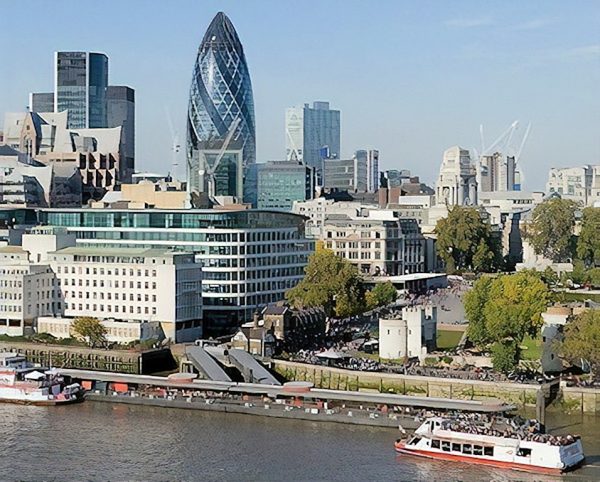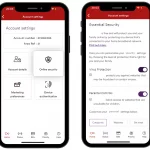Gov Consults on Code to Spread Faster Broadband into Big Buildings

The UK Government has published a new consultation to help set the terms and code for implementation of the new Telecommunications Infrastructure (Leasehold Property) Act 2021, which aims to make it quicker and cheaper for gigabit broadband ISPs to access big buildings (e.g. apartment blocks) when “rogue landlords” fail to respond.
Sadly, network operators (e.g. Openreach, Virgin Media, Hyperoptic etc.) often run into difficulty when attempting to contact landlords, such as while requesting permission to install a new service or offering to negotiate a long-term agreement for access (wayleave). Suffice to say that an unresponsive landlord can leave residents trapped on slower connections and the process for tackling this is often shockingly expensive.
Admittedly, some landlords may have legitimate concerns about damage to property, liability (e.g. health and safety rules) and low rental payments, among other things. Nevertheless, there are also plenty of cases where there may be no real downside to an operator wanting to improve the broadband connectivity of a building, except getting permission.
Advertisement
The new act, which was passed in March 2021 (see our summary), sought to tackle such issues by implementing a significantly cheaper and faster route for dispute resolution via a new tribunal process. Furthermore, landlords will also face a greater obligation to help facilitate the deployment of digital infrastructure when they receive a request from their tenants.
However, this new process will ONLY apply when a landlord has repeatedly failed to respond to requests for access to install a connection that a tenant within the building has requested.
What’s this consultation for?
Passing the Act is one thing, but before operators can take advantage of it various new codes and processes (i.e. the regulatory structure) need to be implemented. The consultation is thus seeking views on the terms that will accompany the interim Code rights acquired by operators following a successful application at the Tribunal (or the Sheriffs court in Scotland).
In addition, it also seeks views on extending the scope of the Act to include other property types beyond big residential buildings (such as business parks and office blocks), and on procedural matters relating to the application process, as well as the length of time for which interim rights should remain valid.
Advertisement
The proposed terms will also set out how, where and when operators may exercise the interim Code rights, as well as the rights and responsibilities of landowners. The intention is to maintain balance between the rights of broadband operators and landowners (even in their absence) and support those living in blocks of flats and apartments to access faster broadband.
Matt Warman, UK Minister for Digital Infrastructure, said:
“The aim of the Act is to encourage landowners to respond to requests for access issued by operators. These access rights are essential for the delivery of connectivity as operators are unable to deploy their services without first obtaining permission to install their equipment.
While we understand some landowners have legitimate reasons for not responding, it is difficult to understand why around 40% of industry requests go without any response. This is even more confusing when property owners are effectively being offered a free upgrade to their buildings, which will not only deliver improved digital services to their existing tenants, but in the longer term, prevent their properties becoming islands of not-spots in the sea of gigabit connections we are helping build.
The accompanying regulations are intended to provide clear guidance to operators, and assurances to landowners and site providers that:
(i) Part 4A orders will only be issued where landowners are genuinely unresponsive, and only where there is a request for a service from a leaseholder, and;
(ii) where operators successfully apply for the interim Code rights, that they undertake work to the highest standard, respect the property and do not stop trying to reach an agreement with the landowner for long-term access.”
The consultation period will run for 8 weeks from Wednesday 9th June 2021 to Wednesday 4th August 2021. The consultation also includes a summary of suggestions for the terms to include in a related Part 4A order (see below), which includes some useful details. Assuming all goes to plan, these changes could help to support the Government’s new £5bn Project Gigabit programme.
Suggestions for the Part 4A Terms
15. Operators installing digital infrastructure via a Part 4A order must send details of the proposed works being carried out to the landowner (e.g. building owner/landowner) no less than 5 working days prior to the proposed installation;
16. Operators will be required to investigate and obtain all necessary consents, permits, licences, permissions, authorisations or approvals prior to undertaking works;
17. Notice should be given by the operator to the landowner, any other known individuals with responsibility for the building (such as managing agent) or interest in the land prior to operators entering properties. Notices for this purpose may include notices affixed to the property. They should be for information purposes only.
18. Works should normally only take place between 0930 -1830, Monday to Friday, with any work outside of these times requiring prior agreement with a managing agent or other empowered person or body (such as a residents association). An exception should be included for emergency access;
19. Operators will be responsible for undertaking work and completing installations to a reasonable professional standard. Works must be carried out by a suitably qualified individual with a supervisor from within the operator’s organisation signing off installations (and any other works) carried out under a Part 4A order;
20. Operators will be required to return any property to a state which is to the reasonable satisfaction of the landowner, employing a least possible damage principle, and within a reasonable timeframe should it choose, or be compelled, to remove its infrastructure from the site;
21. Operators will be required to have insurance before undertaking any work which must be sufficient to cover any damage that may occur, or provide indemnification for the landowner for the same. The minimum value of that insurance should be £5,000,000 (five million) and should reflect the unique nature of the installation taking place under a Part 4A order (in particular that the landowner’s permission was not granted);
22. Operators should -for the duration of the Part 4A order -have the right (subject to any other conditions in the regulation) to reenter the property for the purpose of maintaining and upgrading the apparatus.
23. An obligation will be placed on the landowner which will require them to not damage or otherwise interfere with the installed equipment. This will not prevent them from negotiating with the operator or bringing a case before the courts.
24. Installed electronic communications apparatus should be labelled to identify the network operator. A notice should be affixed in a prominent location within the common area of the building to ensure that building owners are informed of the circumstances under which the installation took place and are provided with information on how they can make contact with the operator.
25. Where an operator (Operator A) buys or merges with another operator (Operator B), we propose that any Part 4A orders which are in place for either operator would be deemed automatically assigned to the new ownership entity.
26. Operators should not undertake an installation in any way which unnecessarily prevents or inhibits the ability of another operator from providing a service to that property. This is to protect consumer choice and prevent an operator installing equipment in such a way as to effectively block competition.
27. The views of consultees are also sought on issues relating to the process operators will need to undertake. This includes steps an operator must take to identify and contact the landowner; the time between the final notice and making an application, and the evidence that must be supplied to the courts. We are also putting forward policy proposals on how long the interim Code rights granted to operators should be in place before they expire.
28. The intention of these two elements is to ensure that an operator has undertaken reasonable steps to discern the name and address of the landowner and issued the required notices to the correct person. It is our proposal that:
● Prior to issuing a final notice to the landowner, operators must:
➢ Have conducted a search of the Land Registry
➢ Have engaged with the individual making a service request in the property to ascertain the name and address of the landowner.● Prior to making an application, operators must
➢ Collect evidence of having carried out the steps set out above
➢ Present copies of the notices that they have issued along with proof of postage.29. Interim Code rights should expire after 18 months, the maximum available under the provision in the Act.
30. Finally, we are seeking views as to whether the provisions within the Act should be extended to include other types of property which share characteristics with multi-dwelling buildings, specifically business parks and office blocks.
Mark is a professional technology writer, IT consultant and computer engineer from Dorset (England), he also founded ISPreview in 1999 and enjoys analysing the latest telecoms and broadband developments. Find me on X (Twitter), Mastodon, Facebook, BlueSky, Threads.net and Linkedin.
« ISP Grain Spotted Expanding their UK FTTP Broadband Build























































Sounds a sensible plan. Just hope it’s interpreted in the spirit it’s written.
If 10s of different operators running fibres and hoc thought the building is an issue, maybe there should be an obligation on the incumbent to offer wholesale access.
I think every MDU provider is running fibre up to people’s individual apartments now (Hyperoptic might still be using Cat5e internally with a switch in the basement) so it would be fairly sensible to just build the fibre infrastructure once and have a facility for patching different people to different providers in an intake room. If you’re blowing multiple fibres to each apartment and only terminating one as standard then it gives you the option of having multiple active providers in the future.
Indeed if there was some open model then it could even pay for itself – £1 per month per fibre patch to the telecoms room or something.